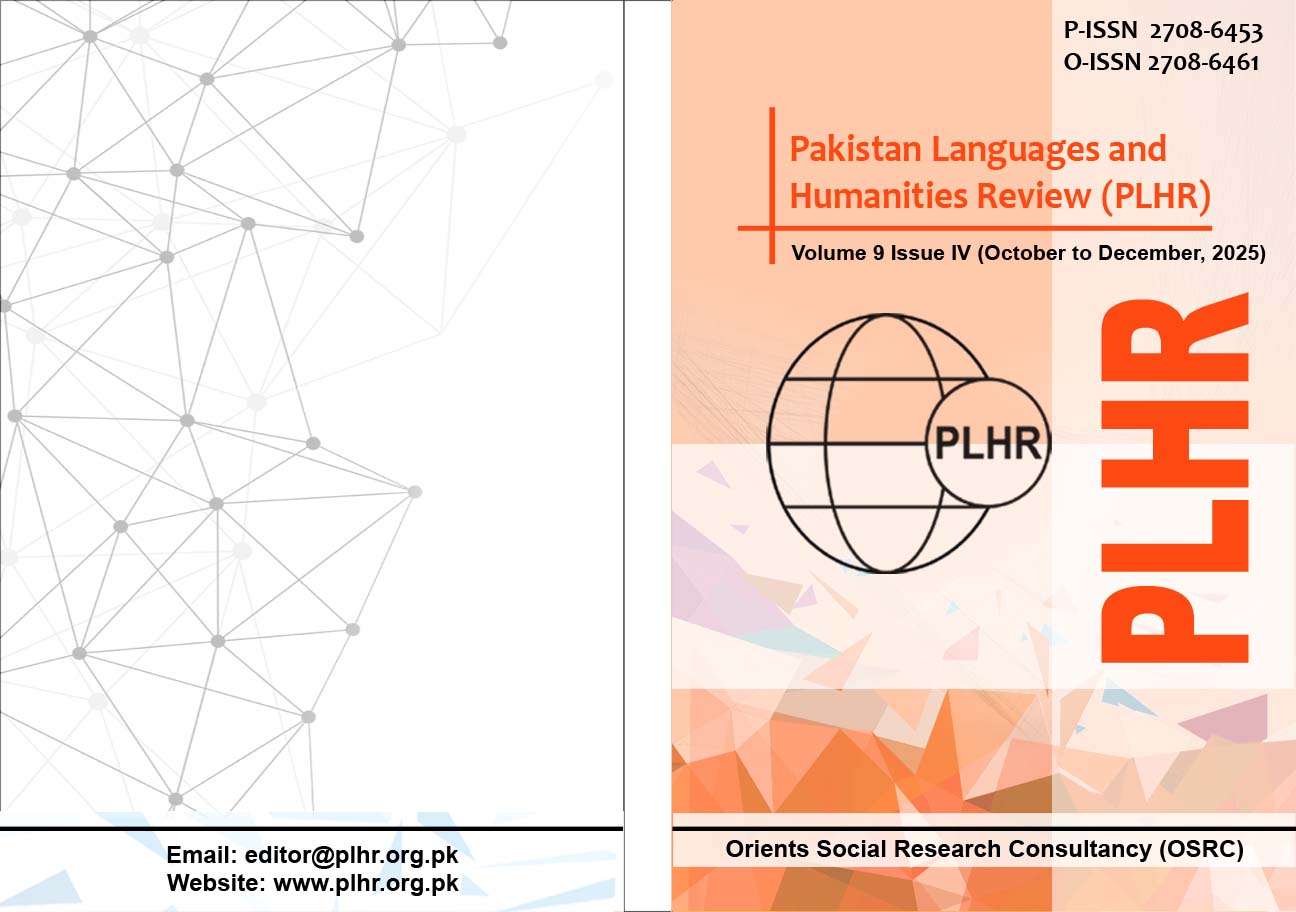Countering Islamophobia and Muslim Stereotypes in Ali Eteraz’s Native Believer
DOI:
https://doi.org/10.47205/plhr.2025(9-IV)01Keywords:
Ali Eteraz, Islamophobia, Native Believer, Post-9/11 America, Sherene Razack, Stereotypes, War on TerrorAbstract
This research paper attempts to delineate the strategies adopted by American Muslims to counter Islamophobia and Muslim Stereotypes in Ali Eteraz’s novel Native Believer (2016). Employing Sherene Razack’s theoretical perspectives from her book: Nothing has to Make Sense: Upholding White Supremacy through anti-Muslim Racism (2022), the paper focuses on post-9/11 Muslim lives in America and the worldwide. The paper charts M’s journey from being a secular Muslim toward a reckless tramp and then an American civilian completely assimilated into the American society. The colonial encounter between Western powers and Muslim-majority regions, spanning centuries of conquest, colonization and cultural imposition has left indelible marks on both the colonizer and the colonized. As the securitization of Islam, War on Terror, and proliferation of surveillance measures serve to perpetuate a cycle of suspicion and discrimination and affect Muslim communities living at diaporic spaces, the paper shows that generally a Muslim has to devise an assimilative approach to survive in such a society
Downloads
Published
Details
-
Abstract Views: 232
PDF Downloads: 128
How to Cite
Issue
Section
License
Copyright (c) 2025 Pakistan Languages and Humanities Review

This work is licensed under a Creative Commons Attribution-NonCommercial 4.0 International License.

ORIENTS SOCIAL RESEARCH CONSULTANCY (OSRC) & PAKISTAN LANGUAGES AND HUMANITIES REVIEW (PLHR) adheres to Creative Commons Attribution-Non Commercial 4.0 International License. The authors submitting and publishing in PLHR agree to the copyright policy under creative common license 4.0 (Attribution-Non Commercial 4.0 International license). Under this license, the authors published in PLHR retain the copyright including publishing rights of their scholarly work and agree to let others remix, tweak, and build upon their work non-commercially. All other authors using the content of PLHR are required to cite author(s) and publisher in their work. Therefore, ORIENTS SOCIAL RESEARCH CONSULTANCY (OSRC) & PAKISTAN LANGUAGES AND HUMANITIES REVIEW (PLHR) follow an Open Access Policy for copyright and licensing.







